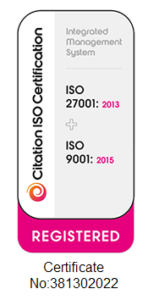Almost Anything is Possible: How Virtual Opens the Door to New Ways to Engage
“The barrier to change is not too little caring; it is too much complexity. To turn caring into action, we need to see a problem, see a solution, and see the impact. But complexity blocks all three steps.” – Bill Gates
Who said virtual meant boring, one-way conversations? In fact, it turns out that the opposite is true.
A report from the American Institute of Physics, titled ‘Future of Association Convening: Envision for the Sciences’, notes that virtual sessions leveraging different digital, text, audio and chat options “may even elicit a livelier discussion than is typical in traditional in-person settings.”
That’s certainly been our experience at Open Audience, where we have found virtual allows you to drive interactivity to really understand what the audience means and feels, resulting in a much more relevant discussion.
The challenge is not what can you do in virtual, but rather do you know what you want to achieve? We frequently have discussions with clients eager to try something new, but who are worried about how it will work.
To me, the issue is more about articulating what you want and leaving us to make it work technically. Once we know a client’s objectives we can think about the design or find technology that allows different types of interactivity to happen. That might be using functionality to replicate flipcharts or whiteboards or juggling sessions with multi-language groups.
Divide and conquer
In many sessions we run, there might be 20 different activities for participants to do, but how do you get through all of those in a half-day or even one-day session? This is where our insights platform, which allows teams to co-create insights in a room, comes to the fore.
We divide the audience into several groups and have each group do different activities or respond to different questions, then come back to the main group where we gather the responses and insights from each group and piece everything together.
In some meetings where participants are multilingual, we separate groups by language cohort and allow them to respond in their native language, which is then auto-translated into English. Once back in the main room, each group presents in English.
Virtual is not a barrier. In fact, we’re finding the entire process can be slicker and quicker because everything is brought together during the session, rather than someone having to take flipcharts back to the office, make sense of each person’s handwriting and type up the findings to create a report.
Another method that is proving to be effective in the virtual world is critical path analysis, which takes participants to a series of different questions based on their answers to the first round of questions – a bit like filling in a tax return form.
We’ve built technology that allows you to make selections in a non-linear, almost conversational way. If I take a simple example, you’re given a choice of ice-cream or dessert, you pick ice-cream and then get a selection of flavours to choose from, but if your chosen flavour isn’t available, you might be asked whether you prefer another flavour or a dessert.
This mimics interpersonal interaction and requires you to think more strategically about how you ask your questions and interconnections between different elements.
This is a useful strategy when you’re trying to narrow a discussion. For example, we were supporting a dentistry conference which had as its agenda item to discuss challenges facing the industry.
However, the organisers weren’t sure what they would talk about, so I suggested sending out a free text poll to elicit suggestions from the 450-person audience.
During a break, we got the organisers together and went through the suggestions, roughly breaking them into four major buckets – for example, legislation, patient expectations, budget and technology.
We then went through the topics, eliminated the ones the organisers didn’t want to talk about, brought in a few that hadn’t been raised and created a prioritisation poll of around six topics.
Each topic or problem was rated on a scale of 1 to 5 as to how easy or difficult it would be to solve and the audience was asked to provide their rating during several polls which were updated on a screen behind the speakers. The team then spent 1 hour and 20 minutes talking about the challenges and perceptions and taking questions from the audience.
These examples show that with the right approach and technology, you can drive interactivity and, by asking the audience for their opinion, you can have more meaningful and relevant discussions.
A virtual setting is no barrier to lively discussions if you plan and execute them well.
Leslie Robertson is the Founder of Open Audience, an audience engagement consultancy that specialises in making life sciences meetings more engaging with more positive, successful outcomes – whether in-person or in the virtual space. The Open Audience team helps to strategise and prepare pre- and post-meeting as well as providing real-time support and guidance during the meeting. Open Audience also offers customisable, multilingual engagement platforms that include interactive polling, surveys, and ideas exchange.
Know someone who would find this interesting? Share this article with them!

